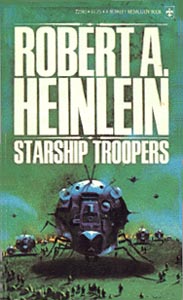I just got a Stumble to Pharyngula’s science blog that has a link to a YouTube video of Isaac Asimov. He is speaking about what he thought the top science story of 1988 was. I like running across videos of him speaking because it is nice to put a voice and face to my favorite author. The video goes out of sync about half way through unfortunately. Check it out!
Via Pharyngula
Isaac Asimov on the Greenhouse Effect
Related Post
Luke Skywalker bionic arm waiting on green light for clinical trials.Luke Skywalker bionic arm waiting on green light for clinical trials.
I noticed today on my RSS feed for TheForce.net there was a news blurb about Luke’s prosthetic hand from Star Wars might soon become a reality. I tried clicking on the full article located at MSN but for some reason it didn’t come up for me. After a google search I found an article located on the IEEE Spectrum site that had more information. The prosthetic arm was nicknamed “Luke Arm” by Dean Kamen, the inventor of the Segway. An interesting video found via Engadget shows the arm in use and explains the modular approach used in manufacturing. It looks like the project’s fate lies in the hands of the Defense Advanced Research Projects Agency (DARPA) which has funded the first two phases. If clinical trials are approved, it is possible that veterans could have access to these as early as next year.
The Icarus Hunt by Timothy ZahnThe Icarus Hunt by Timothy Zahn

I’m slowly chipping away at my collection of Timothy Zahn novels. I recently enjoyed reading Manta’s Gift, but I definitely enjoyed Icarus Hunt more. Rather than focusing on one alien race, Zahn spreads quite a few alien species throughout the book. There is constant action, enough so that the book hardly felt like 450 paperback pages long. I categorize this book as a cross between a Sci-Fi and mystery novel.
(more…)
Starship Troopers by Robert A. HeinleinStarship Troopers by Robert A. Heinlein

The 1959 novel Starship Troopers is a military-based science fiction novel which won the Hugo Award for best novel in 1960. Robert A. Heinlein clearly draws from his previous military experience to describe the career of Juan “Johnny” Rico as he works his way up from a fresh recruit to 2nd Lieutenant in the Terran Federation military during the “Bug War”.
The story is told through a series of flashbacks narrated by Rico, intertwined between these are obvious commentaries on discipline, politics, and human behavior. Heinlein’s concepts, specifically mechanical armor, influenced science fiction in various realms ranging from other novels to games, and even spawned a Hollywood motion picture. I’ve seen the movie Starship Troopers (1997) before, and will watch it again soon, so keep an eye out for that review. (more…)